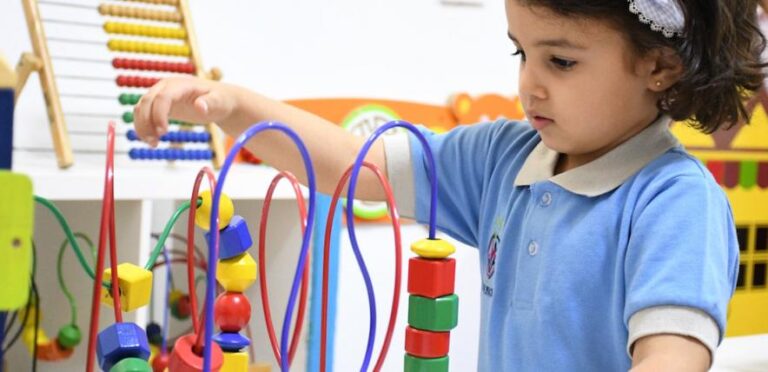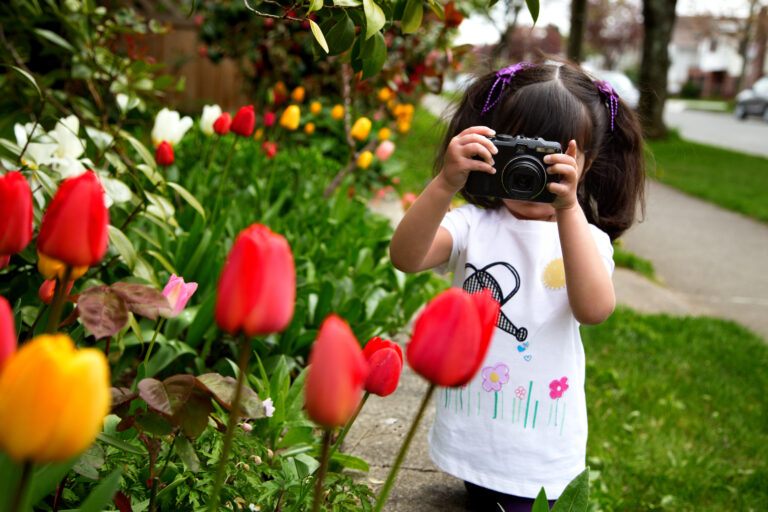Gardening is a great activity for all ages – it’s good exercise, it gets us outdoors into the fresh air, and if you grow your own fruit and veg it can be a good way to ensure a varied, healthy diet.
Getting young children involved in the garden is not only fun for them – and a lovely way for you to spend time together – but can be an introduction to a hobby that will bring joy and relaxation for the rest of their lives.
You don’t need a huge garden, either – small gardens can be beautiful, and if you don’t have an outdoor space at all, you can get busy growing things in pots and in window boxes.
If you have no garden at all, you could try applying for an allotment.
Buy child-sized gardening tools
If you want your child to get involved in digging and planting, it’s a good idea to invest in some child-sized tools.
You don’t have to spend a fortune; at this time of year, supermarkets have lots of ‘outdoor’ toys, and there’s always some little spades, buckets and trowels in amongst the paddling pools and tennis sets.
Smaller tools will be lighter and much easier to handle for your little one, and having their own tools will also help your child feel invested in gardening as an activity.
The items you most need are a small fork and a trowel, but a small pack of little plant pots can also be fairly cheap and can be filled with your child’s very own plants.
Plant some super speedy seeds
Often, gardening can be all about playing the long game: you plant seeds in spring, and don’t expect to see any results for several weeks or months.
But this can be difficult for small children to understand; they can often lose interest quite quickly in something when they don’t see results straight away. That’s why it’s a good idea to choose at least some gardening projects that will wield speedy results.
Bean sprouts — These are easy to grow, and it’s done indoors, in a jar or a tray, so you don’t even need a garden. There are lots of different kinds of sprouts, but mung beans are probably the easiest.
Salad leaves — These can be picked and eaten around three weeks after planting. Rocket is a good option, but a packet of mixed salad leaves will provide a mixture so you can see which ones you like the best.
Foodie favourites
Growing your own veg is a fantastic way to encourage both a love of gardening and adventurous eating; your child is more likely to want to try things they’ve grown themselves.
Plus it’s a great way to teach cause and effect so children know the connection between the food they eat and where they come from e.g. apples.
Courgettes are fairly quick growing, and you get excellent flowers before the fast-growing vegetables appear.
Pumpkins are hugely satisfying; once they appear, it’s great fun to check on them daily to see them swell and change colour, and they look so fantastic glowing orange in your veg patch. And of course, if you don’t want to eat them, you can carve them at Halloween.
For both of these, plant the seeds in April after the last frost, and they will be ready by late October. You can start them off in small pots to keep them safe until the plants start to produce leaves, then transfer them to a veg patch.
Or tomatoes, peas and potatoes are also easy to grow and will start to sprout quite quickly.
Strawberries are a great British fruit, and not only look beautiful but taste delicious. It’s best to either buy runners (a green stem that will produce a new plant) or a ready-made plant in a pot.
When children are eating fruit, remember to have a conversation about the seeds inside or outside the fruit.
Invite children to plant their own apple seeds or show them that we can eat strawberry seeds. Encourage your child to investigate seeds from the fruit and vegetables that they eat to compare shape and size.
Tall trees from small seeds
What could be more satisfying to a pre-schooler than growing their very own tree? This is easy to do from an acorn, and don’t panic: you won’t end up with a huge oak tree in your garden unless you’re planning to live a very, very long time!
Collect acorns in early to mid autumn after the first frost. Remove the cups, soak the acorns overnight in warm water and sow in compost. You won’t see results until early spring, but after the long cold winter it will seem like magic to see your own little oak trees appearing.
Indoor plants
If you don’t have an outdoor space, you can still encourage a love of plants to your child by growing pot plants indoors.
Money plants are a good choice; they’re difficult to kill and look really attractive.
Spider plants not only have an excellent name, but in spring produce spiderettes, or baby plants, which you can then root in a pot next to the mother plant, and cut free once it’s established to start a whole spider plant family!
Bees and butterflies
It’s important to talk to young children about how wildlife such as birds and insects are in decline, and rely on gardens for their survival.
When you and your child plan your gardening together, you can think about the kinds of plants that attract bees and butterflies and even create some wildlife habitats together. The RHS website is a good source of more information.
You can also use the time together to play games such as I Spy or counting the bees and butterflies.
Safety in the garden
You can use gardening to talk about safety and make your child aware of the dangers of eating and handling some plants, for example avoiding stinging nettles.
You should also always make sure you and your child wash your hands after handling soil and plants.
This article was written by Siobhan Godwood for the Early Years Alliance.
Where next?







